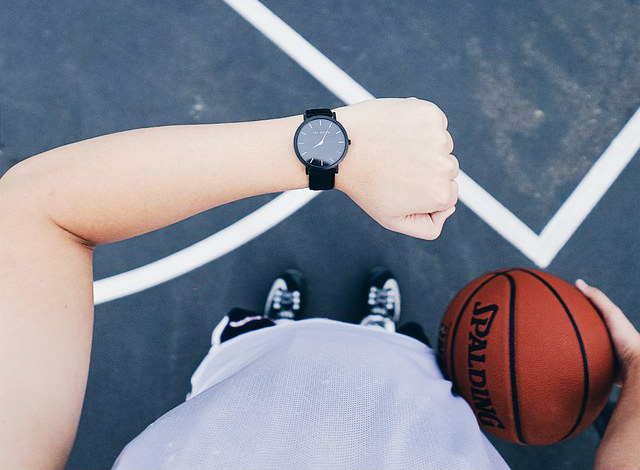 Reading Time: 6 minutes
Reading Time: 6 minutesPost-holiday party indulgence, I meandered to a treadmill for a penance workout. I was already sore, fighting a food-hangover, and dreading an indoor run on a chilly day. I sent my workout buddy a message, “Three or four miles?” She wrote back fast, “Four miles! And you’re lucky I didn’t say five!” Holding to our workout-buddy code, at the end of my run, I sent her a “proof of workout” picture of the treadmill display: five miles that I had never planned to do.
Amazing exercise partners are hard to come by. After joining forces with my current workout buddy, I can vouch for the power of inspiration and accountability gained from aligning with someone I consider a right fit. I am a fitness enthusiast, exercise geek, and type-A personality. Luckily, so is she. We learn from one another.
Here are the thirteen keys to workout buddy etiquette that we have developed to foster and maintain a solid workout partnership:
1. Open the Door
The first step to finding a workout buddy is letting that person in. Observe others in your gym and group fitness classes. Look for the person who seems to be working just as much or maybe even slightly more than you. Introduce yourself and throw that person some praise about how they motivated you to workout harder. Over time, if the response is positive, ask the person to meet at the gym at the same time, perhaps for the same class.
2. Show Up
This is a cardinal rule of any partnership. If you’re not physically there when promised, it can be a real buzzkill for your workout buddy. For me, this is so fundamental that if I’m let down by a no-showing buddy more than once, I’m out. Set a practice of providing adequate cancellation notice to your buddy, such as notifying before bedtime about morning workouts or before lunchtime for after-work workouts.
3. Accept Comparative Strengths and Weaknesses
If you’re in a partnership where one partner always “wins,” and one always “loses,” then it probably won’t last. Engage in a diversity of activities that allow each partner to shine. Maybe one person is a faster runner, while the other can do a bodyweight bench press. Do both. Be willing to accept defeat, and learn from each other’s strengths. Be willing to compromise, as well. If there are some activities your workout buddy just cannot or will not do, you may have to go it alone sometimes, and that’s okay.
4. Clearly Communicate
Discuss each other’s pet peeves in advance. After about six months of working out together, my buddy and I have learned a lot about one another. She likes her weight plates facing out on the barbell. I don’t like anyone standing in front of me when I squat heavy. She likes to run on the left side of me. I like to run with headphones for long distances, no matter how great the company.
These things will come up as you go, of course. Without being a jerk, let your frustrations be known when they first arise. And if you’re on the receiving end of notification, don’t take it personally. When your buddy lets you know about something, it’s another way of saying, “I’m planning on working out with you for a long time and I know you care that we have an enjoyable workout.”
5. Keep Personal Discussions to a Reasonable Amount
If you’re having a bad day, save long discussions about personal matters until the main workout is complete. Keep your energy and attention focused on the workouts. If there is a need for more time to talk, consider scheduling a meal or coffee after the workout. Don’t drag drama into the weight room.
6. Set a Vision Together
When you start your workouts, discuss your previous performance on similar workouts. For example, if you’re running a 5km distance together for the first time in a while, discuss your previous best time, how you’re feeling on the given day, and whether you think you can set a personal record. Making a commitment to try your hardest on the spot is a powerful thing.
Own your role in praising your workout buddy for an outstanding performance, whether it was showing up despite a difficult week or comparing your first day of working out together to what your buddy is able to accomplish a year later.
7. Provide a Healthy Challenge
You will eventually know what your buddy is fully capable of. Sometimes a challenge is as simple as picking up a heavier dumbbell for you both to use or saying, “I bet you can do one extra repetition,” before your buddy starts a set. Make a habit of identifying opportunities for growth. Showing your workout buddy that you have confidence in them, will enhance their confidence in themselves.
8. Push Go
If you outperform your buddy in a workout, avoid coaching them until they finish. A simple, “Go, buddy, go!” or “You got this!” a couple times is plenty. If your buddy wanted someone to scream-shame them into completing a workout, they would have hired the gym’s toughest trainer.
9. Push Stop
Encourage your buddy to rest and recover at least once a week. Avoid pushing each other to failure day in and day out. For example, suggest active recovery days such as yoga or hiking to mix up your routines. Taking time for recovery allows for a stronger workout the next time you team up. If you think your workout buddy is overdoing it, suggest a day off for you both.
10. Give Second Chances
Exercise forgiveness. If your buddy is an energy flop or fails to remember something important to you, start with compassion. Ask your buddy if they are okay before going on to address something that is frustrating you. Miscommunications can be an opportunity to grow your allegiance.
11. Make It Fun
Maybe my buddy and I go a little overboard in our workout buddy pursuits, but there is no harm in matching workout buddy t-shirts from time to time or excessive high-fiving. Bring joy to your sessions to help both of you build positive associations with workouts. Make it your happy hour.
12. Let Others In
The goofiest thing about partnering up for workouts is that this often allows more people to approach you both. Instead of other gym-goers just seeing you constantly in the alone zone, they now see you as someone socializing and taking workouts to the next performance level. Avoid being so exclusive or walled off that you fail to socialize with the rest of the gym. Let your partnership be something that allows further connections and inspiration.
13. Allow for Break-ups and Staying in Touch
A special camaraderie develops from sharing struggles and growth in the workout arena. Inevitably, a great workout partner can become a best friend, particularly if your hour at the gym is your only personal time in the day.
But there may come a time when one of you must move cities or move gyms. Maintain your bond. Let each other know when you do something you could never do before. Praise one another for finding a new workout buddy to keep motivated. Appreciate what you invested in one another and your partnership.
Get Out There and Workout Buddy Up
Don’t be shy, workout friends. Whether the goal is just getting your workout buddy to the gym or training for a major event, fostering a strong partnership multiplies gains — and who doesn’t want that?







